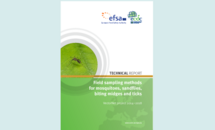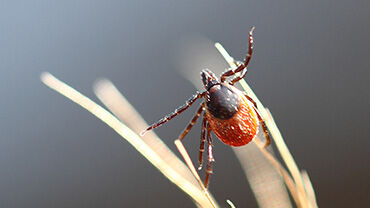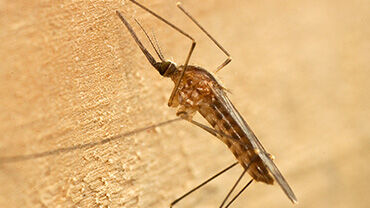Field sampling methods for mosquitoes, sandflies, biting midges and ticks
VectorNet is a joint initiative of the European Food Safety Authority (EFSA) and the European Centre for Disease Prevention and Control (ECDC). It was established in May 2014. The project supports the collection of data on vectors and pathogens in vectors, related to both animal and human health.
This document presents vector collection methods and strategies used by VectorNet for targeted sampling. The main aim of the collection is to provide information on the distribution of the following vector groups: mosquitoes, sandflies, biting midges and ticks. The sampling protocols in this document also present methods (where possible) for data collection related to abundance and cover various aspects of the ecology, behaviour and vector status of the target species. The protocols were validated in the field in 2015.
This document provides entomologists involved in vector sampling with information on how to collect, store and identify disease vectors. It will also give public health professionals insight into the different collection strategies that can be applied to sample mosquitoes, sandflies, biting midges and ticks. The collection methods and strategies are addressed in four chapters, one for each vector group.
Executive Summary
ECDC has the mandate to strengthen the capacity of the EU for the prevention and control of infectious diseases. Vector-borne diseases, as a specific group of a (re-)emerging infections, pose a threat to European public health and require particular attention. One important aspect of preparedness for vector-borne diseases is the monitoring or surveillance of the introduction, establishment and spread of the main disease vectors.
An efficient surveillance or monitoring campaign starts with the development of a well-considered sampling strategy. Depending on the target species, a range of sampling methods is available. This implies that different teams use different approaches and as operational vector sampling methods often lack standardisation, quantitative comparisons across different settings are very hard to make. This also implies that teams starting a disease surveillance project can get overwhelmed by the sheer amount of options and may end up choosing a strategy that is less than ideal to meet their objectives.
Although some guidelines exist on the sampling of invasive and native mosquito species in Europe [1–3], there is no summary document on sampling strategies for the various vector species. In the framework of VectorNet, panEuropean field campaigns were established to collect data on the presence/absence or seasonal distribution of mosquitoes, sandflies, biting midges and ticks. To standardise the efforts across different teams and to ensure comparable outcomes, a set of protocols were developed for every species group. These protocols describe a uniform way to sample specimens for the four above-mentioned groups. The protocols also describe the conservation of specimens, identification and quality control. Depending on the vector group, the protocols are subdivided according to activity (e.g. flying vs resting mosquitoes and sandflies), life stage (mosquitoes), or species (ticks). Each section describes in detail which traps should be used to meet specific study objectives, how to select a sampling site, when to sample and how long or how often, how to collect the samples, how to preserve them, how to identify them, and how to assess quality.
This document intends to provide support to professionals involved in the surveillance, monitoring or control of vector-borne diseases. It can also be of interest to decision-makers, policymakers and stakeholders in public health, as well as non-experts in mosquito surveillance, monitoring and control. The suggested methods can be applied to the entire geographic area of Europe, e.g. in all EU Member States and EEA/EFTA countries. The methods presented here can also be applied to few EU Outermost Regions and Overseas Countries and Territories, but for most of them, the methods presented in this document should be adapted to the local situation.
Download







